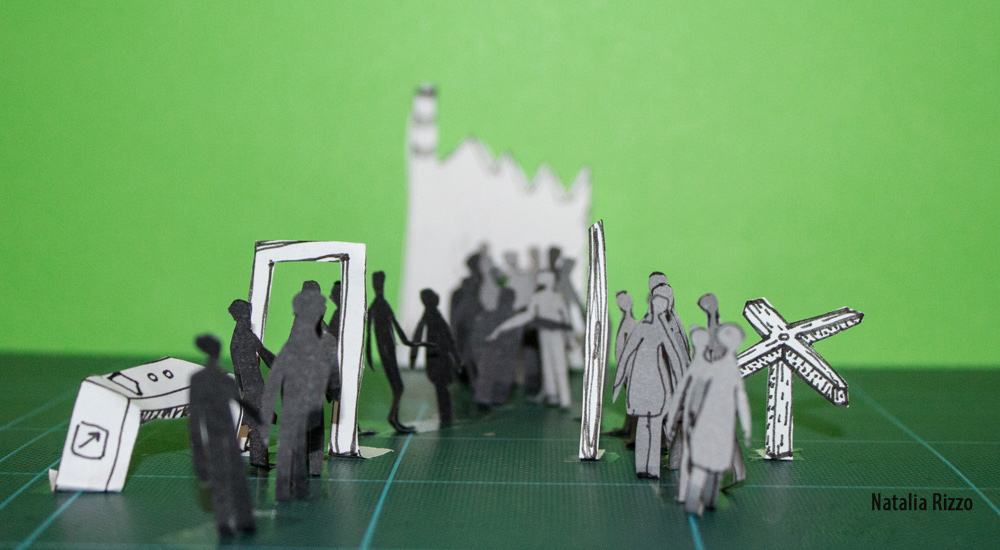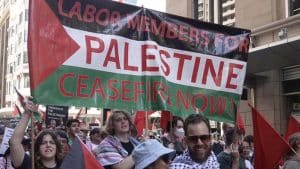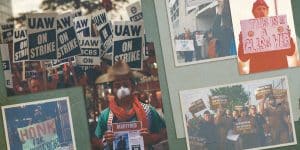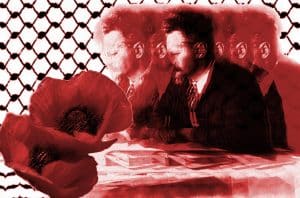In August of 2014, Maria Fernandes, a Newark, New Jersey woman who worked four part-time jobs, died sleeping in her car. Because of her work schedule, she had pulled into a parking lot at a convenience store between jobs to catch a couple hours of sleep. She was apparently overcome by the combination of carbon monoxide from her car, which she had left running, and fumes from a gas can in the back of the vehicle. She carried the gas can because she sometimes ran out of fuel between jobs.
Fernandes, who struggled to make ends meet, had an apartment, but little time to go there to sleep. She was not alone. Millions of working people in the U.S. struggle daily just to survive. According to government statistics, there are 6.4 million workers called “involuntary part-time” workers with part-time jobs because they cannot find full-time employment (Bureau of Labor Statistics). Many work more than one part-time job, almost always in the low-paid service sector–retail, restaurant and fast food, child care, home health care, or private security.
If you count the “involuntary part-time” workers alongside the ranks of the unemployed, a grim picture emerges. The government counts 7.4 million workers as unemployed. Almost two million of these have been unemployed for more than 27 weeks. An additional 1.7 million workers were termed “marginally attached to the labor force” because they had essentially given up looking for work. This means that almost 18 million are either unemployed or underemployed. Many economists agree that the BLS figures underestimate the real extent of unemployment. Unemployment rates for Blacks, Latinos and other racial minority groups is disproportionately higher than those for whites.
Whose recovery?
The slow recovery from the “Great Recession” has not meant any meaningful recovery for the working class. Millions of well-paid jobs, including those in manufacturing, simply disappeared during the implosion of the economy. The vast majority of newly created jobs are in “low-skilled,” low-wage job categories. The bottom third of workers, 47 million, earn $11.64 per hour or less. Wages have stagnated while income inequality is the greatest it has been since World War II.
The working class in the U.S. is diverse and heavily stratified. The upper layer of workers make a high wage and enjoy benefits, like health insurance and pensions, while a growing number exist at or near the poverty level. The lower strata of the class are disproportionately people of color, older displaced workers and more likely to be women.
The bottom third of workers, 47 million, earn $11.64 per hour or less
“The SWA (The State of Working America, 2006/2007) study showed that the average weekly wage of a worker in 1973 was 4,581.67 (measured in 2006 dollars). It dropped steadily until 1995, rose during the capitalist upturn until 2000, and then began to drop again. In 2005 it was $543.63 a week, even as the upturn continued. Thus, with ups and downs, the study’s analysis of government statistics concludes that in a little more than three decades there was a drop of close to $40 in the weekly earnings of four-fifths of the working class, or almost 7 percent.” Low Wage Capitalism, Fred Goldstein, p. 106
The growth of the low-wage service economy is nothing new. The shift towards precarious work–insecure work at low wages with few protections–began well before the recession and is driven by a decades-long employers’ offensive. Work has been de-skilled in factories, construction, the service sector, and offices. Former labor strongholds have been devastated by deindustrialization as production has shifted to developing countries and the U.S. South. Benefits have been slashed, often with the cooperation of union bureaucrats. Cuts to the social safety net have made the lives of the poorest sections of the working class increasingly insecure. These conditions are all methods for disciplining the working class.
“The decline in wages has been aggravated by the loss of fixed-benefit pensions, the higher cost of health care or the loss of health care coverage altogether, as well as the general rise in the cost of housing. Longer hours, more people in a family working, the frequency of layoffs, shut downs, expansion of part-time work, temporary work and so on–all these factors constitute part of the hidden decline in wages.” Goldstein, p. 107
Cuts to the social safety net have made the lives of the poorest sections of the working class increasingly insecure.
The growth of part-time work is not restricted to the US economy and has become more common in Europe and other developed countries. In the neo-colonial countries, many workers exist in a nether world of marginal employment. The United Nations estimates that 2.8 billion people, about half the world’s population, survive on less than $2 per day and 1.2 billion on less than one dollar a day. Hundreds of millions live in dire conditions and lack access to clean water, food, sanitation, healthcare and adequate housing. Millions more are victims of capitalist wars and interventions.
Capitalism has to go
It’s clear that inequality, unemployment and poverty are inherent features of capitalism. The system is prone to crisis–either periodic temporary downturns or larger, more protracted, crises leading to mass unemployment. The overall crisis of profitability experienced by the capitalist system after the end of the postwar boom has led to the reorganization of work and shattering of communities as the bosses grasp for increased profits. The neo-liberal offensive, which aims, among other things, to privatize government services, is part of this one-sided offensive against the working class.
Over the past few decades, capitalist production has been reconfigured with new technology and the imposition of sweatshop conditions. In this process, the global/international working class has been reshaped. Significant sections of the economies of the imperialist countries have been hollowed out and shifted to so-called service work or overseas. Work in the U.S. and other imperialist countries is increasingly insecure. However, the world working class including those in the U.S. have demonstrated the continued capacity and willingness to fight back.
Socialists fight for a society based on production for human needs, not human greed. But how do we get there?
Fast food workers and other low-wage workers in the U.S. have led the way, fighting for $15 and a union. The movement to increase the minimum wage to $15 per hour has made great strides. However, achieving this demand will not be enough. The demand for a substantially increased minimum wage must be linked to a class-wide struggle for national healthcare, the preservation of public education, for a public works jobs program to create millions of full-time jobs at union wages, and the preservation of Social Security and Medicare among others.
It is crucial that the unions lead the way, but unfortunately, time and again the bureaucracy has subordinated the interests of workers to the needs of the Democratic Party. This will require a struggle for working-class political independence, as well as a fight inside the unions to build a new class-struggle leadership. The unions have to become spaces where workers, including the part time and low wage sectors, can participate fully. Without a clear class-based leadership, these workers may look to the far right, and populist politicians like Donald Trump, for solutions to their misery.
John Leslie is a union construction worker in Philadelphia, PA.










